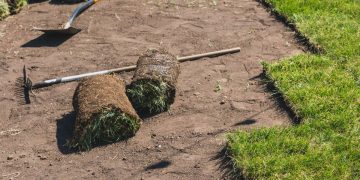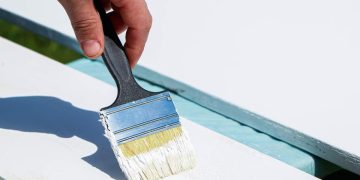Laying new turf is one of the fastest ways to transform your yard into a green, vibrant space. However, achieving a healthy, long-lasting lawn depends heavily on what you do before the turf is laid. Preparing the area properly ensures that your turf takes root, thrives, and continues to look great for years to come.
In this comprehensive guide, we’ll walk you through the key steps you need to take to prepare your yard before installing new turf. We’ll also explain common mistakes to avoid and why proper preparation is essential for long-term success. Whether you’re revamping a tired lawn or installing turf for the first time, this guide has you covered.
Why Preparation is Key
Before laying new turf, proper yard preparation is absolutely essential. Think of it as building the foundation of a house—if the groundwork isn’t right, everything laid on top is compromised. Even the highest quality turf won’t thrive if the soil beneath is compacted, nutrient-poor, or overrun with weeds.
Good preparation promotes healthy root establishment, allowing the turf to anchor quickly and absorb water and nutrients effectively. This ensures your lawn becomes lush and durable in the long term. Proper soil treatment also helps prevent weed infestation, which can otherwise choke new turf and reduce its overall vitality.
In addition, preparing the yard improves drainage, avoiding waterlogging that can rot the turf or encourage fungal growth. Levelling the surface also creates a smooth, even, and safe lawn, which is not only better looking but also safer for children, pets, and foot traffic.
Lastly, proper prep increases the lifespan and aesthetic appeal of your lawn, helping it remain green, healthy, and low-maintenance. Skipping these steps might save time upfront but could lead to costly problems later. For a truly beautiful and sustainable lawn, preparation isn’t optional—it’s critical. Now, let’s dive into the step-by-step process to get your yard turf-ready.
Step 1: Choose the Right Turf for Your Climate and Needs
Before any physical preparation begins, you’ll need to select the right type of turf. Some common varieties include:
-
Kikuyu – great for high-traffic areas and sunny spaces
-
Buffalo (such as Sir Walter) – shade-tolerant and drought-resistant
-
Couch grass – fine-textured and good for full sun
Consult with turf professionals to choose a variety that suits your location, usage, and aesthetic preferences. If you’re in Sydney, Direct Turf Delivery in Sydney is a convenient and reputable option for getting high-quality turf delivered straight to your home.
Step 2: Remove Existing Lawn, Weeds, and Debris
Before you can lay new turf, you must clear out what’s already there. Here’s how:
-
Mow the existing lawn low – this makes it easier to remove.
-
Use a glyphosate-based herbicide to kill any remaining grass and weeds. Apply it at least 7–10 days before turf installation.
-
Remove dead grass, weeds, rocks, sticks, and other debris using a rake or turf cutter.
-
Dispose of green waste responsibly or use a green waste bin or skip.
If you skip this step or do it poorly, weeds can re-emerge and compete with your new turf.
Step 3: Test and Improve Your Soil
Healthy turf needs healthy soil. Testing your soil helps you identify deficiencies and pH imbalances.
-
Soil pH should ideally be between 6.0 and 7.0.
You can use a home soil test kit or hire a professional. -
Clay-heavy soils may need gypsum to improve drainage.
-
Sandy soils may benefit from added organic matter to hold moisture.
-
Compact soils should be loosened with a rotary hoe or tiller to a depth of 100–150 mm.
Once your soil is tested, you can amend it with the right fertilisers and conditioners. A well-prepared soil bed promotes fast root establishment and reduces water usage.
Step 4: Add Underlay Soil if Needed
In many cases, your existing soil won’t be ideal for turf. This is where turf underlay soil comes in. Turf underlay is a mix of sand, loam, and organic material designed specifically for turf growth.
-
Spread turf underlay to a depth of 100 mm.
-
Use a rake or screed board to level the soil and smooth out any bumps.
-
Consider using a string line or levelling bar to ensure even grading, especially if your yard is on a slope.
-
Allow for proper drainage—you don’t want water pooling under the turf.
Level the surface so the top of the soil is around 30–40 mm below paths or driveways. This allows room for the turf to sit flush once installed.
Step 5: Compact the Soil Lightly
Once the soil is level, lightly compact it to reduce air pockets. This helps the turf roots stay in contact with the soil.
-
Use a roller or simply walk across the surface in overlapping passes.
-
Don’t over-compact—you still want the soil loose enough for roots to grow.
After compacting, water the area lightly to help the soil settle and confirm evenness.
Step 6: Apply Starter Fertiliser
Before you roll out your turf, it’s a good idea to apply a starter fertiliser. This gives the turf an extra boost to help roots develop quickly.
-
Choose a fertiliser with high phosphorus content (like 10-15%).
-
Spread it evenly using a broadcast spreader or by hand (with gloves).
-
Lightly water the fertiliser into the soil to activate it.
This small step can make a big difference in how well your turf establishes.
Step 7: Final Watering Before Turf Installation
The soil should be moist (but not soggy) on the day you install your turf.
-
Water the soil thoroughly 24 hours before installation.
-
Avoid installing turf on dry or dusty soil—it can shock the roots.
-
If it’s a hot day, water again in the morning before laying begins.
Bonus Tips for Successful Turf Laying
Once your yard is prepared, the turf-laying process should go smoothly. Here are a few bonus tips to ensure success:
-
Lay turf the same day it arrives. Turf is perishable and can dry out quickly, especially in summer.
-
Start from the farthest corner and work your way out.
-
Stagger turf joints like bricks to avoid visible seams.
-
Use a roller after installation to press turf into the soil.
-
Water immediately after laying and continue watering daily for the first 2–3 weeks.
And don’t forget—Direct Turf Delivery in Sydney makes it easy to get fresh, farm-cut turf delivered directly to your home or job site. This saves time and ensures quality.
Mistakes to Avoid
Many people rush into turf installation and end up regretting it. Here are common mistakes to avoid:
-
Skipping soil testing – leads to poor turf performance
-
Laying turf over weeds or old grass – causes regrowth and competition
-
Not levelling the ground properly – results in uneven lawn and drainage issues
-
Failing to water enough during establishment phase – dries out roots and causes turf failure
By following the proper preparation process, you’ll avoid these pitfalls and enjoy a lawn that looks good and lasts.
Final Thoughts
A lush, green lawn doesn’t start with the turf—it starts with preparation. By clearing the area, conditioning the soil, levelling properly, and laying turf with care, you set the foundation for a beautiful yard that’s easy to maintain.
If you’re based in New South Wales and want fresh turf delivered to your door, Direct Turf Delivery in Sydney offers a convenient solution. With expert advice, fast delivery, and quality turf varieties, they can help make your dream lawn a reality.
Take the time to prepare, and your lawn will reward you with beauty and function for years to come.














































